Welcome to the comprehensive guide on how to grow your first garden! Whether you have a green thumb or are completely new to gardening, this guide is designed to help beginners like you successfully start and enjoy your own garden.
Gardening for beginners can seem daunting, but with the right guidance and a little patience, anyone can grow a successful first garden. This guide will cover everything you need to know to get started, from selecting the right location for your garden to maintaining it for optimal growth.
Key Takeaways
- Starting a garden as a beginner can be a rewarding experience for mental well-being and self-sustainability.
- Selecting the right location and vegetables to grow is essential to the success of your first garden.
- Soil preparation, planting times, and garden maintenance are crucial factors to consider when starting your first garden.
Why Start Your First Garden?
Starting your first garden can be a rewarding and fulfilling experience, offering numerous benefits for both you and the environment. Not only will you have access to fresh, flavorful vegetables and fruits, but you will also have the satisfaction of growing them yourself. The taste and texture of garden-fresh produce are unmatched, making it a worthwhile endeavor. Gardening can also be a stress-reliever and a form of mindfulness, allowing you to connect with nature and alleviate anxiety. Children who garden tend to eat more fruits and vegetables, perform better in school, and develop important life skills.
When starting your first garden, it is essential to pick the right location. Choose a sunny spot with well-draining soil that doesn’t stay wet. Avoid strong winds and areas with high foot traffic or frequent flooding. Nutrient-rich soil is crucial for healthy plants, so consider adding organic matter to improve soil quality.
It is advisable to start small and grow what you and your family will actually eat. A 10’ x 10’ garden in the ground or a 4’ x 4’ or 4’ x 8’ raised bed is manageable for beginners. Choose easy vegetables to grow, such as lettuce, green beans, radishes, tomatoes, zucchini, and peppers. Consider your family’s preferences and the availability of certain vegetables in your area.
Proper planning and timing are important for successful gardening. Not all vegetables can be planted at the same time. Cool-season vegetables like lettuce and broccoli can be grown in early spring and fall, while warm-season vegetables like tomatoes and cucumbers should be planted in late spring or summer. Plan your layout, considering light requirements and spacing. Companion planting can help with natural pest control and improve flavor.
To get started, you will need basic gardening tools like shovels, rakes, hoes, trowels, watering cans, and gloves. It’s also helpful to have pruning tools, scissors, a wheelbarrow, and a kneeling pad. Choose good quality tools appropriate for your size and build.
Once you have chosen your garden location and prepared the soil, it’s time to select and plant your vegetables. Refer to seed catalogs or gardening magazines for inspiration and plant selection. Consider how much each plant will produce and allocate enough space accordingly. Planting charts for your region and growing zone can help with timing and seedling selection.
In conclusion, starting your first garden has numerous benefits including access to fresh produce, stress relief, and the opportunity to connect with nature. Choose a suitable location, start small, and select easy vegetables to grow. Proper planning, timing, and the right tools are important for a successful garden. Enjoy the process and the bountiful harvest of your own homegrown vegetables and fruits.
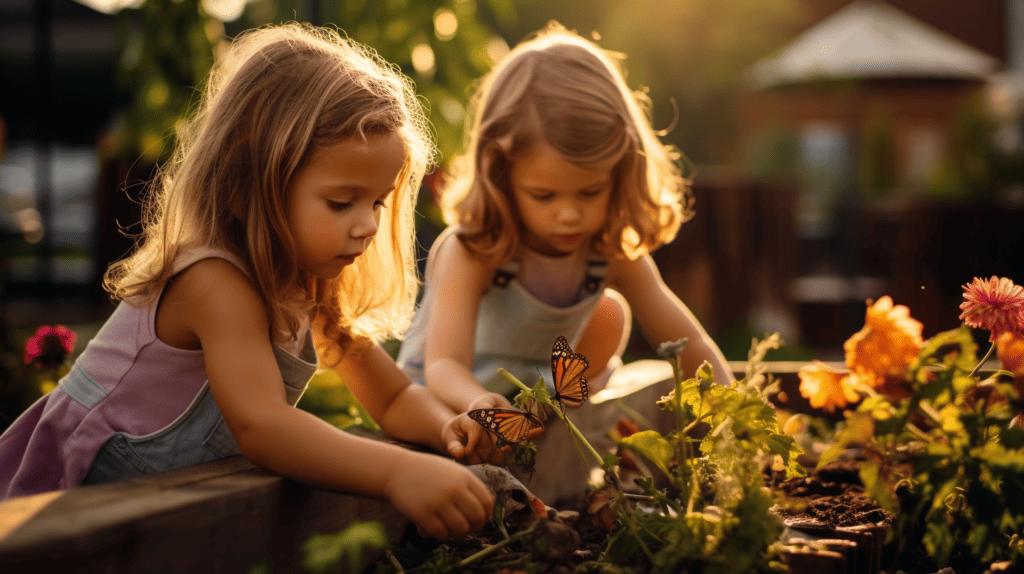
Selecting the Right Location for Your Garden
When it comes to starting your first garden, choosing the right location is crucial for the success of your plants. The location should have enough sunlight, well-draining soil, and be protected from windy areas or high foot traffic. A nutrient-rich soil is essential for healthy plants, so adding organic matter to thin soil is recommended.
For successful vegetable gardening, it is important to choose a sunny spot that receives 6 to 8 hours of direct sunlight per day, as most vegetables require this much sunlight. Raised beds or raised rows can be used in poorly drained areas to avoid water pooling.
It is also important to consider the size of your garden. Starting small is recommended for beginners, with a 10′ x 10′ garden being manageable for planting in the ground, while a 4′ x 4′ or 4′ x 8′ raised bed is a good beginner size. If going bigger, a 12′ x 24′ garden is suitable for a family of four. Your garden should also have paths for easy access to plants for weeding and harvesting.
When choosing vegetables, it is important to consider personal preferences and the amount of vegetables your family will consume. It is advisable to check with your state’s Cooperative Extension Service to find out what plants grow best in your area. Starting with easy vegetables is recommended for beginners, such as lettuce, green beans, radishes, tomatoes, zucchini, peppers, beets, carrots, chard, spinach, kale, and peas.
Planting should be done based on the timing and preference of each vegetable. Cool-season vegetables like broccoli and peas should be planted in early spring or fall, while warm-season vegetables like tomatoes and cucumbers should be planted after the soil warms up in late spring and summer. Tall veggies should be planted on the north side of the garden to avoid shading shorter plants.
Overall, selecting the right location for your garden, starting small, and choosing the right vegetables are important factors for a successful vegetable gardening experience.
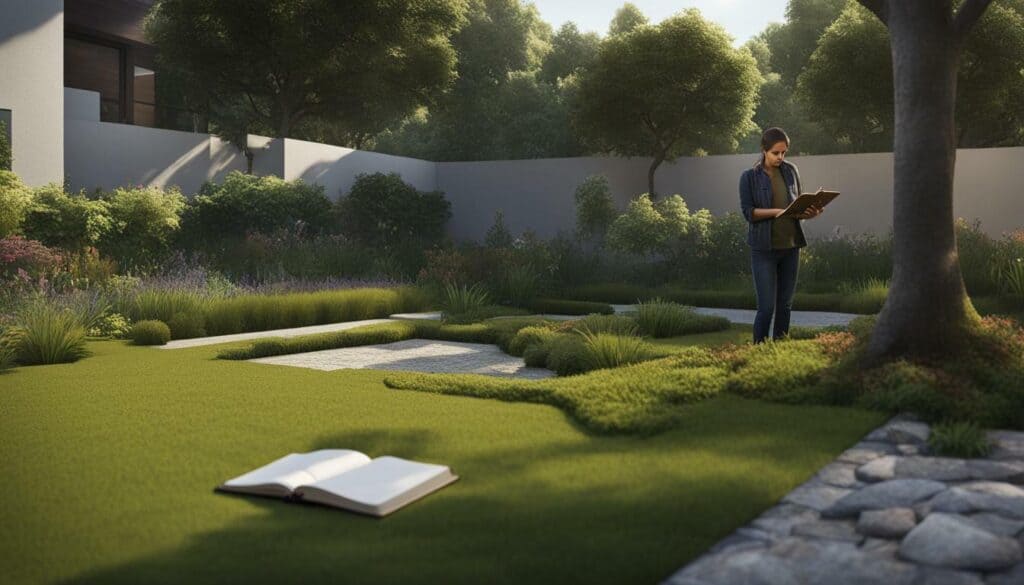
Choosing the Right Vegetables to Grow
One of the exciting aspects of starting your first garden is deciding which vegetables to grow. Selecting the right vegetables is crucial to ensure a successful and enjoyable gardening experience. Here are some tips for selecting the best vegetables for beginner gardeners:
| Vegetable | Light Requirements | Spacing |
|---|---|---|
| Lettuce | Partial Shade | 6-8 inches apart |
| Green Beans | Full Sun | 3-6 inches apart |
| Radishes | Partial Shade | 1-2 inches apart |
| Tomatoes | Full Sun | 2-3 feet apart |
| Zucchini | Full Sun | 3-4 feet apart |
| Peppers | Full Sun | 1-2 feet apart |
| Beets | Partial Shade | 3-4 inches apart |
| Carrots | Partial Shade | 2-3 inches apart |
| Chard | Partial Shade | 6-8 inches apart |
| Spinach | Partial Shade | 6-8 inches apart |
| Kale | Partial Shade | 18-24 inches apart |
| Peas | Partial Shade | 2-3 inches apart |
When selecting vegetables to grow, it is important to choose those that you and your family enjoy eating. It is also crucial to consider the availability of these veggies at your local grocery store, as this can save you money in the long run. Starting small with 3 to 5 favorite vegetables is recommended to avoid overwhelm.
Planning the garden layout, considering the plant’s light requirements, and leaving enough space for pathways are also important factors to consider. Companion planting is also a great way to naturally control pests in the garden.
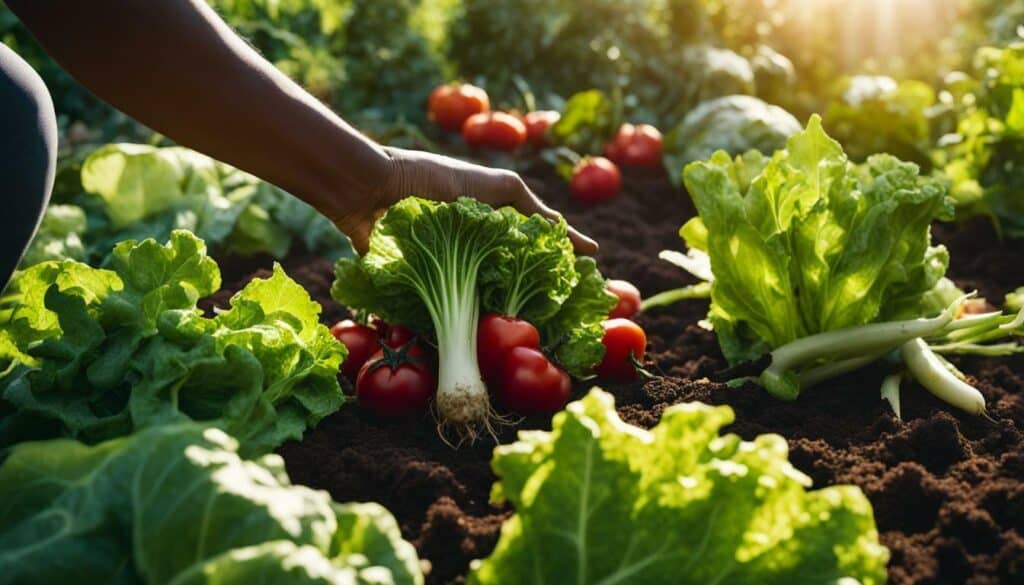
For those with limited space, using containers and raised beds is an excellent option. With the right knowledge and planning, anyone can successfully grow their own fresh vegetables.
When to Plant Your First Garden
Timing is crucial in gardening, and knowing when to plant your vegetables can greatly impact their growth and yield. To determine the best time to plant your first garden, it is important to consider several factors.
One of the first things to consider is the location of your garden. Most vegetables require 6 to 8 hours of direct sunlight per day, so it is essential to choose a sunny spot for your garden. In addition, the soil should drain well and not stay wet, as wet soil can lead to rotted roots. It is also important to choose a stable location that is not too windy and does not receive too much foot traffic or flooding.
Another important consideration is the size of your garden. It is recommended for beginners to start small and only plant vegetables that you know you and your family will eat. A 10′ x 10′ garden is a manageable size if planting in the ground, while a 4′ x 4′ or 4′ x 8′ raised bed is a good beginner size. If you want to go bigger, a 12′ x 24′ garden in the ground could be suitable for a family of four.
When it comes to choosing vegetables, it is best to start with easy-to-grow and productive options. Some of the easiest vegetables for beginners include lettuce, green beans, radishes, tomatoes (by transplant), zucchini, peppers (by transplant), beets, carrots, chard, spinach, kale, and peas. It is also important to consider what you and your family like to eat and how much you will realistically be able to consume.
In terms of planting, not all vegetables are planted at the same time. Cool-season vegetables such as lettuce, broccoli, and peas can be planted in early spring and fall, while warm-season vegetables like tomatoes, peppers, and cucumbers should be planted once the soil warms up in late spring and summer. It is recommended to refer to a planting chart for your specific region and growing zone to determine the best planting dates.
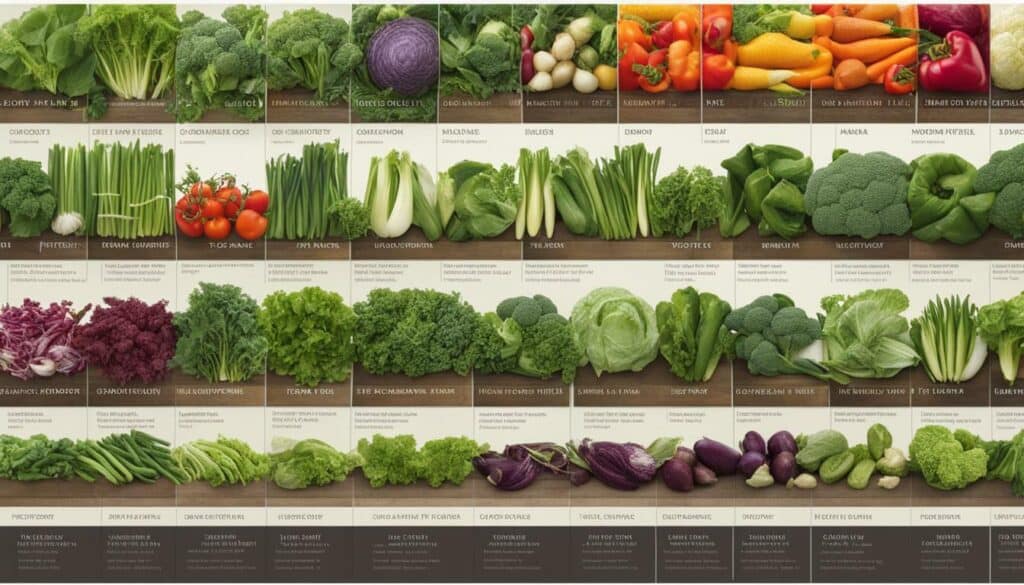
Overall, the key to planting your first garden is to start small, choose the right location, and select easy-to-grow vegetables. By following these guidelines, you can enjoy the benefits of a plentiful and delicious homegrown harvest.
Preparing the Soil for Your First Garden
Before you start planting in your first garden, it’s essential to prepare the soil to ensure optimal growing conditions for your vegetables. Proper soil preparation can make all the difference in the success of your garden.
Choosing the right location for your garden is the first step in preparing your soil. Make sure to select a spot that receives at least six hours of sunlight per day and has good drainage. Avoid areas that are too windy or prone to flooding.
Once you have chosen the right location, it’s time to prepare the soil. Start by removing any weeds, rocks, or debris from the area. Then, use a shovel, fork, rake, and hoe to loosen the soil and break up any clumps. Make sure to dig deep, turning the soil to a depth of 12 to 24 inches.
Your soil should be nutrient-rich to support the growth of your vegetable plants. You can add organic matter such as compost or well-rotted manure to your soil to increase its fertility. Work the organic matter into the soil thoroughly with your tools, making sure it’s evenly distributed.
If you’re gardening in limited space, container or raised bed gardening may be a better option for you. When using containers or raised beds, make sure to select the right soil and fertilizer for optimal plant growth. A soilless mix made from peat moss, perlite, and vermiculite is ideal for container gardening, while a high-quality garden soil mixed with compost and/or organic fertilizer is best for raised bed gardening.
By properly preparing your soil, you’ll give your vegetable plants the best chance to thrive and produce a bountiful harvest. Remember to use the right tools and techniques, and follow the tips from these sources to ensure a successful first garden.
Selecting High-Quality Seeds for Your First Garden
The quality of your seeds plays a crucial role in the success of your first garden, so it’s important to choose wisely. When selecting seeds, it’s essential to consider factors such as the yield, disease resistance, and the climate in your area.
Look for reputable seed companies that offer high-quality, non-GMO seeds. Some companies even specialize in organic and heirloom seeds, which have not been genetically modified and have a history of successful growth.
| Easy-to-Grow Vegetables for Beginners | Availability at Grocery Stores | Maintenance Required |
|---|---|---|
| Lettuce | Commonly Available | Low Maintenance |
| Green Beans | Commonly Available | Low Maintenance |
| Radishes | Commonly Available | Low Maintenance |
| Tomatoes | Commonly Available | Moderate Maintenance |
| Zucchini | Commonly Available | Moderate Maintenance |
| Peppers | Commonly Available | Moderate Maintenance |
| Beets | Less Commonly Available | Low Maintenance |
| Carrots | Less Commonly Available | Low Maintenance |
| Chard | Less Commonly Available | Moderate Maintenance |
| Spinach | Less Commonly Available | Moderate Maintenance |
| Kale | Less Commonly Available | Moderate Maintenance |
| Peas | Less Commonly Available | Moderate Maintenance |
It’s important to start small and only grow what you know you and your family will eat. The size of your garden will depend on whether you’re planting in the ground or using raised beds. When choosing a location for your garden, consider factors such as sunlight, drainage, wind, and soil quality.
Once you’ve selected your seeds, plan your layout and consider companion planting to enhance the growth of your vegetables. Using high-quality seeds ensures germination and higher yields at harvest time.

Companion Plants for Beginners
Companion planting is the practice of growing complementary plants together to enhance the growth and pest control of your vegetables. Some easy companion plants for beginners include marigolds, basil, parsley, and chives.
With these tips in mind, you’ll be on your way to a successful first garden.
Arranging Vegetables in Your First Garden
To maximize the productivity and aesthetic appeal of your first garden, it’s important to plan and arrange your vegetables strategically. This requires careful consideration of various factors, including selecting the right location, choosing the right vegetables, and planting them in the right order.
| Factors to Consider | Guidelines |
|---|---|
| Location | Choose a sunny spot with well-draining soil and protection from strong winds. Consider adding organic matter to enhance plant growth. |
| Size | Start small and gradually expand. A garden size of 10′ x 10′ or a raised bed of 4′ x 4′ or 4′ x 8′ is manageable for beginners. |
| Vegetables | Choose vegetables that are easy to grow and that you and your family enjoy eating. Consider the availability of the vegetables at your local grocery store and be prepared to take care of your plants throughout the growing season. |
| Planting | Be mindful of when each vegetable needs to be planted and arrange them accordingly. For instance, cool-season vegetables like lettuce and peas are planted in early spring, while warm-season vegetables like tomatoes and cucumbers are planted in late spring or summer. |
| Height and Shade Requirements | Consider the height and shade requirements of different vegetables when arranging them in your garden. Place tall plants at the back and shorter plants in front to ensure they all receive adequate sunlight. |
| Companion Planting | Companion planting can be beneficial in terms of natural pest control and improving flavor. Consider planting herbs like basil and oregano with your vegetables. |
By following these tips and guidelines, you can arrange your vegetables effectively and enjoy a successful first garden. And don’t forget to take advantage of the aesthetics of your garden by adding some beautiful flowers near your vegetable beds. With the right planning and guidance, your first garden can be bountiful and picturesque.
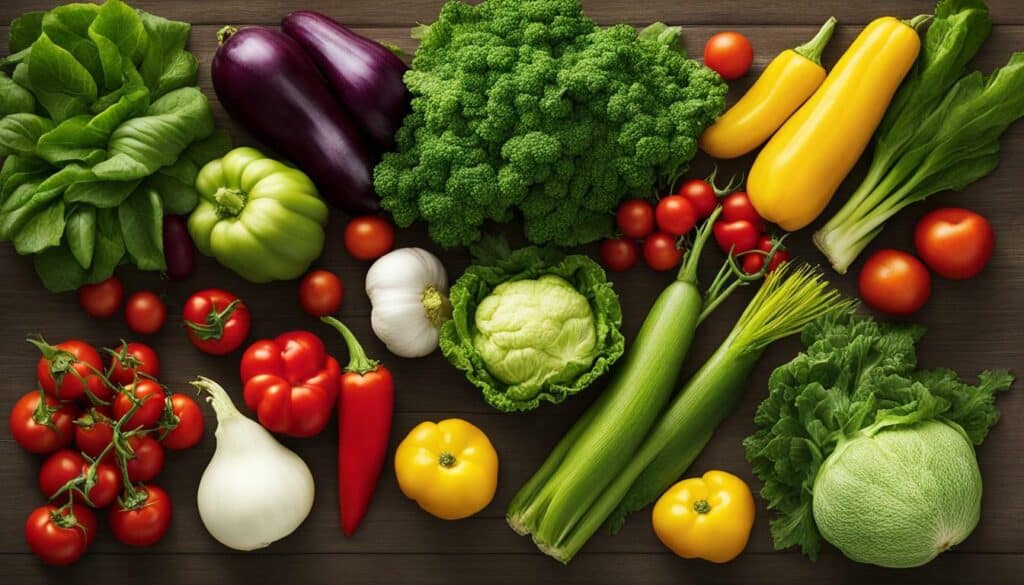
Companion Planting in Your First Garden
Companion planting is a gardening technique that involves planting different plants together to create beneficial relationships and enhance overall garden health. In fact, companion planting can help deter pests and attract beneficial insects, while also improving soil fertility and enhancing the flavor of your vegetables.
As a beginner, incorporating companion plants in your first garden is a great way to boost overall plant health and reduce the need for pesticides and herbicides. For example, marigolds are a popular companion flower that can help repel pests and attract pollinators. Planting them alongside vegetables like tomatoes and cucumbers can help these plants grow stronger and healthier.
Other easy companion plants for beginners include chives, basil, and parsley. These herbs help repel pests like aphids and can enhance the flavor of your vegetables when planted alongside them. Additionally, planting beans alongside corn can help improve soil fertility and add nitrogen back into the soil.
When planning your companion planting strategy, it is important to keep in mind the specific needs of each vegetable. For example, planting onions and garlic next to carrots can help deter carrot flies, while planting radishes alongside cucumbers can help deter cucumber beetles. By considering the needs of each plant and arranging them accordingly in your garden, you can create a healthy and thriving ecosystem for your vegetables.
Overall, incorporating companion planting in your first garden can be a simple and effective way to improve its health and productivity. By selecting the right companion plants and arranging them strategically, you can reduce the need for pesticides and herbicides while enhancing the overall flavor and quality of your vegetables.
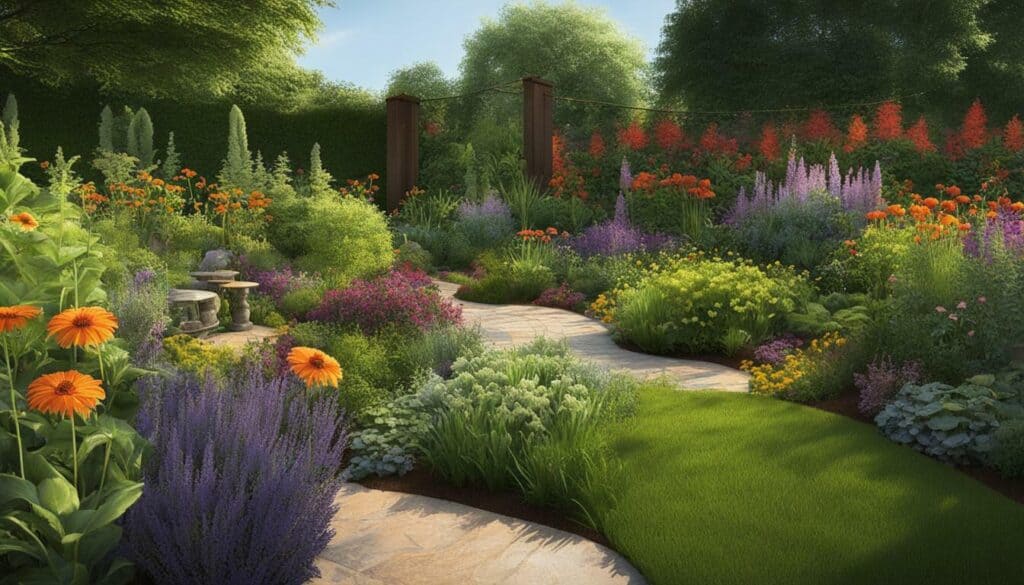
Container and Raised Bed Gardening for Limited Space
Don’t let limited space discourage you from starting your first garden! Container gardening and raised bed gardening are excellent alternatives for growing plants in small areas. These methods allow you to efficiently use space while creating a suitable environment for growing vegetables, fruits, and herbs.
When selecting a location for container or raised bed gardening, it is important to consider several factors including sunlight, drainage, wind exposure, and nutrient-rich soil. Most vegetables require 6 to 8 hours of direct sunlight per day, so selecting a spot with ample sun exposure is crucial. Poorly drained soil can be improved by using raised beds or raised rows, and it is advisable to remove any rocks to ensure proper root growth. Additionally, it is important to avoid areas with strong winds or excessive foot traffic.
It is recommended for beginners to start with a small garden, as planting too much can be overwhelming. A 10′ x 10′ garden in the ground or a 4′ x 4′ or 4′ x 8′ raised bed are manageable sizes. It is important to leave space between rows or beds for easy access and maintenance.
When selecting vegetables to grow, choose easy-to-grow varieties that are productive. Vegetables such as lettuce, green beans, radishes, tomatoes, zucchini, peppers, beets, carrots, chard, spinach, kale, and peas are some of the easiest to grow. Factors such as your family’s preferences, vegetable availability in your area, and your ability to care for the plants throughout the growing season should also be considered.
The timing of planting is crucial and varies depending on the type of vegetable. Cool-season vegetables like lettuce, broccoli, and peas are planted in early spring or fall, while warm-season vegetables like tomatoes, peppers, and cucumbers are planted in late spring or summer. It is important to consult planting charts for your region to determine the appropriate planting dates.
Proper soil preparation is essential for container and raised bed gardening. This includes turning and loosening the soil, removing debris, and adding organic material like compost or well-rotted manure. This helps provide nutrients to the plants and improves soil structure. Regular maintenance tasks include watering, weeding, fertilizing, and pest control.
With proper planning and care, container and raised bed gardening can be great alternatives for those with limited space. You can grow a variety of fresh and delicious produce right in your own home.
Maintaining Your First Garden
Once you’ve set up your first garden, it’s important to maintain it properly to ensure healthy plant growth and bountiful harvests. Here are some essential garden maintenance tips to help you keep your first garden thriving.
Watering Your Garden
Watering is an essential aspect of maintaining your first garden. Vegetables need a consistent supply of water to grow properly. You should water your garden regularly, ideally in the morning or early evening when the sun isn’t as strong. A good rule of thumb is to give your garden 1-2 inches of water per week, either through rainfall or irrigation. Be sure to water at the base of the plants and avoid getting the leaves wet to prevent fungal diseases.
Weeding Your Garden
Weeds compete with your vegetables for nutrients and water and can quickly overtake a garden if left unchecked. It’s important to weed your garden regularly to ensure that your vegetables have the best chance of growing strong and healthy. Pull weeds by hand or use a hoe to remove them from the soil. It’s best to weed after a rain shower or after watering to make it easier to pull the weeds out of the ground.
Fertilizing Your Garden
Fertilizing your garden can help your vegetables grow stronger and more productive. You can use organic or synthetic fertilizers to provide your plants with the necessary nutrients. Organic fertilizers include compost, bone meal, and blood meal. Synthetic fertilizers are chemical-based and provide nutrients in a concentrated form. It’s important to follow the instructions on the fertilizer packaging and not over-fertilize, as this can damage your plants.
Controlling Pests and Diseases
Pests and diseases can wreak havoc on your garden if left unchecked. One way to control pests and diseases is through companion planting. Companion plants can help repel pests, attract beneficial insects, and improve soil health. You can also use natural pest control methods like handpicking insects off your plants or using insecticidal soaps.
Gardening in Limited Space
If you’re limited on space, raised bed gardening or container gardening are great options for maintaining a garden. Raised beds provide a contained growing area and can be filled with nutrient-rich soil. Containers can be placed on a balcony, patio, or porch to grow vegetables in even the smallest of spaces. Be sure to choose a quality potting mix for your containers and provide adequate drainage.
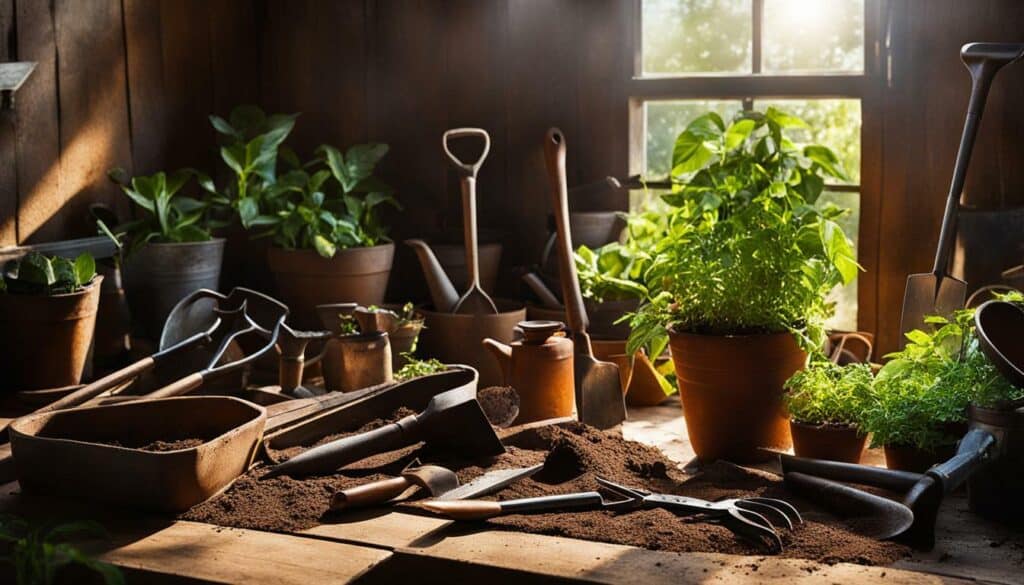
Maintaining your first garden may seem like a daunting task, but with proper care and attention, it can be a rewarding and enjoyable experience. Remember to water regularly, weed regularly, fertilize as needed, and control pests and diseases to keep your plants healthy and strong. And if you’re short on space, raised bed gardening or container gardening are great options to consider. Happy gardening!
Conclusion
Congratulations on completing this comprehensive guide on growing your first garden! Starting a vegetable garden can be a highly beneficial and rewarding activity for beginners. It enables you to relish the freshness and taste of homegrown produce while also providing a sense of accomplishment.
Choosing the right location for your garden is of paramount importance. It should have ample sunlight, good drainage, and protection from strong winds. Additionally, it is essential to select the right vegetables for your garden based on your preferences, family’s consumption, and the availability of certain plants in your area.
Start small and expand gradually as you gain experience. Proper soil preparation, plant care, and maintenance are vital for a successful harvest. You may consider using raised beds or containers if you have limited space. Companion planting can also help with pest control and improve the flavor of your crops.
In summary, growing your first garden allows you to have control over the quality and organic nature of your produce. It also provides numerous physical, mental, and educational benefits. I hope this guide has been helpful, and I wish you all the best on your gardening journey!
FAQ
Q: What is Grow Your First Garden: A Beginner’s Comprehensive Guide?
A: Grow Your First Garden: A Beginner’s Comprehensive Guide is a comprehensive guide that covers how to start a vegetable garden from scratch, including selecting the right location, choosing the right vegetables to grow, and when to plant them. It aims to provide the necessary knowledge and information for beginners to successfully grow their own garden.
Q: Why should I start my first garden?
A: Starting a garden as a beginner has numerous benefits. It allows you to have fresh, organic produce at your fingertips, promotes physical activity and stress relief, and can save you money on groceries. Gardening also provides an opportunity to connect with nature and learn valuable skills.
Q: How do I select the right location for my garden?
A: When selecting a location for your first garden, consider factors such as sunlight exposure, soil quality, and accessibility to water. Choose a spot that receives at least six hours of direct sunlight daily and has well-draining soil. Ideally, the location should be easily accessible from your house and a water source.
Q: How do I choose the right vegetables to grow?
A: Selecting the right vegetables for your first garden is crucial. Choose vegetables that you and your family enjoy eating and that are suitable for your climate and growing conditions. Focus on easy-to-grow options for beginners, such as tomatoes, cucumbers, lettuce, and green beans.
Q: When should I plant my first garden?
A: The timing for planting your first garden depends on your specific location and the vegetables you are growing. Generally, it’s best to start planting after the danger of frost has passed and the soil has warmed up. Consult seed packets or local gardening resources for specific planting dates.
Q: How do I prepare the soil for my first garden?
A: Proper soil preparation is essential for a successful garden. Start by removing any existing vegetation and weeds. Loosen the soil with a garden fork or tiller and amend it with organic matter, such as compost or aged manure, to improve its fertility and drainage.
Q: How do I select high-quality seeds for my first garden?
A: Selecting high-quality seeds is crucial for a healthy and productive garden. Look for reputable seed suppliers and choose seeds that are labeled as organic or heirloom. Read reviews and check for information about the seed’s germination rate and disease resistance.
Q: How should I arrange vegetables in my first garden?
A: Arrange your vegetables in your first garden based on their planting and sunlight requirements. Place taller plants on the north or east side of the garden to avoid shading smaller plants. Consider companion planting, where beneficial plants are grown together, to maximize space and deter pests.
Q: What is companion planting and why is it beneficial for beginners?
A: Companion planting is the practice of growing certain plants together for mutual benefits. It can help deter pests, improve pollination, and enhance the flavor and productivity of your garden. For beginners, companion planting can provide extra support and increase the chances of a successful harvest.
Q: Can I garden in limited space?
A: Yes, gardening is possible even with limited space. Container gardening allows you to grow vegetables in pots or containers, while raised bed gardening involves constructing elevated beds. Both methods are great alternatives for small yards, balconies, or even indoor gardening.
Q: How do I maintain my first garden?
A: Proper maintenance is key to ensuring the health and productivity of your first garden. Regularly water your plants, fertilize them as needed, and keep an eye out for pests and diseases. Practice good garden hygiene by removing weeds and spent plants, and prune or provide support to plants that need it.
What are the essential steps for beginners to start gardening?
For nurturing nature’s way for gardening beginners, there are a few essential steps to get started. First, choose the right location for your garden, ensuring it receives adequate sunlight. Next, prepare the soil by removing weeds and adding compost or fertilizer. Select plants suitable for your region and start them from seeds or seedlings. Regular watering and proper pruning will keep your garden healthy. Lastly, gather basic gardening tools and regularly monitor for pests or diseases. With time and patience, you’ll develop a green thumb and enjoy the rewards of your nurturing efforts.
Source Links
- https://www.almanac.com/vegetable-gardening-for-beginners
- https://gardenerspath.com/how-to/beginners/first-vegetable-garden/
- https://www.amazon.com/Grow-Your-Own-Garden-Successful/dp/B0BR759YHT
- https://bramblewoodhill.com/starting-first-garden/
- https://www.bhg.com/gardening/vegetable/vegetables/planning-your-first-vegetable-garden/
- https://www.bhg.com/gardening/yard/garden-care/ten-steps-to-beginning-a-garden/
- https://sebsnjaesnews.rutgers.edu/2020/04/choosing-the-right-location-for-your-vegetable-garden/
- https://www.gardensthatmatter.com/choose-garden-location/
- https://growitbuildit.com/14-factors-to-choose-your-vegetable-garden-location/
- https://growagoodlife.com/choosing-vegetables-grow/
- https://www.almanac.com/soil-preparation-how-do-you-prepare-garden-soil-planting
- https://www.familyhandyman.com/list/how-to-prep-soil-for-a-vegetable-garden/
- https://www.wikihow.com/Prepare-the-Soil-for-a-Vegetable-Garden
- https://seedsnsuch.com/blogs/gardeners-greenroom/first-garden-buying-guide-7-easy-seeds-to-get-you-started-growing-your-own-food
- https://www.bhg.com/gardening/design/projects/guide-to-buying-seeds/
- https://www.growforagecookferment.com/how-to-choose-the-right-seeds-for-your-garden/
- https://www.thespruce.com/planning-and-starting-a-vegetable-garden-1403184
- https://www.firstdayofhome.com/vegetable-gardening-for-beginners/
- https://www.almanac.com/companion-planting-guide-vegetables
- https://www.farmersalmanac.com/companion-planting-guide
- https://homesteadingfamily.com/companion-planting-in-the-vegetable-garden/
- https://savvygardening.com/4×8-raised-bed-vegetable-garden-layout/
- https://www.amazon.com/Simple-Raised-Container-Gardening-Spaces/dp/1778014607
- https://www.amazon.com/Raised-Bed-Container-Gardening-Beginner-Friendly/dp/8057040262
- http://lizfabry.blogspot.com/2012/11/garden-update.html?m=1
- https://www.preciouscore.com/7-life-lessons-i-have-learned-from-my-first-garden/
- https://everyday-reading.com/first-garden-white-house-garden-and-how/

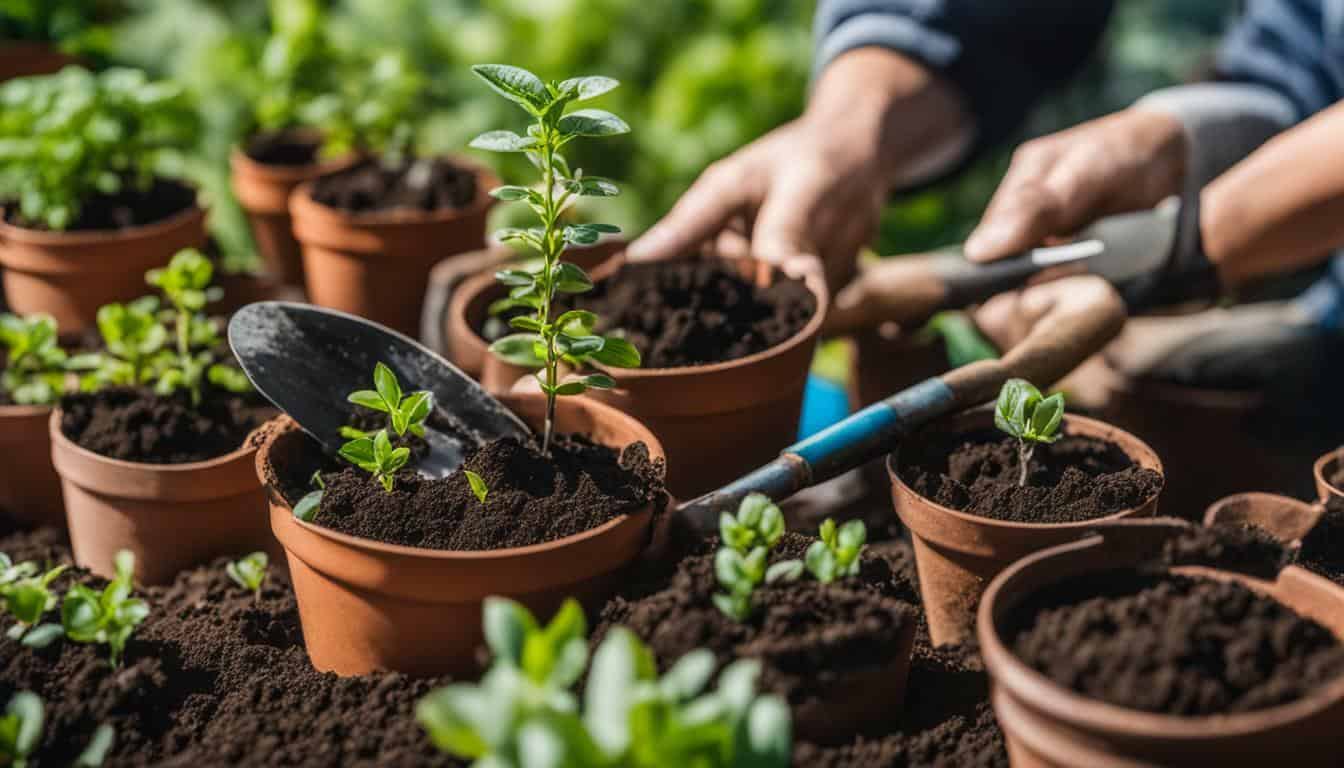



Leave a Reply